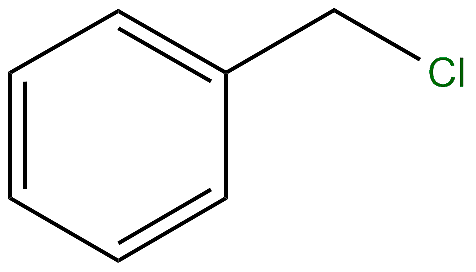
Answer
384.9k+ views
Hint :The IUPAC nomenclature system is a set of logical guidelines developed and utilised by organic chemists to avoid the issues that arbitrary naming may generate. Knowing these guidelines and being provided a structural formula, one should be able to write a separate name for each compound. Similarly, given an IUPAC name, a structural formula should be able to be written. An IUPAC name will typically contain three components: a root, a suffix, and a functional group.
Complete Step By Step Answer:
Substituted benzene ring compounds have a less systematic nomenclature than alkanes, alkenes, and alkynes. The bulk of these compounds, on the other hand, have one-of-a-kind names. In order to learn these names, memorising is the only option.
Phenyl, abbreviated Ph-, and benzyl, abbreviated Bn-, are two often encountered substituent groups that integrate a benzene ring. A phenyl group should not be confused with the chemical phenol. Ar- for an aryl group is a broad and helpful generic notation that complements the usage of R- for an alkyl group (any aromatic ring).
When there are many substituents on a benzene ring, the relative positions of the substituents must be indicated by numbering the ring carbons or by some other method. The prefixes ortho, meta, and para are widely employed to signify a 1,2-, 1,3-, or 1,4- connection in the case of disubstituted benzenes. The first row of compounds in the following examples shows this use in red. Some substituted toluenes have singular names (for example, xylene, cresol, and toluidine), and their isomers are usually labelled with the ortho, meta, or para prefix.
Here the substituent in the given compound is chloromethane (prefix).
Hence the answer is Option A .
Note :
An alkylating agent is benzoyl chloride. In a hydrolysis process, benzyl chloride combines with water to generate benzyl alcohol and hydrochloric acid, indicating its high reactivity (compared to alkyl chlorides). Hydrolysis releases hydrochloric acid when it comes into touch with mucosal membranes. As a lachrymator, benzyl chloride has been employed in chemical warfare. It also has a strong irritant effect on the skin.
Complete Step By Step Answer:
Substituted benzene ring compounds have a less systematic nomenclature than alkanes, alkenes, and alkynes. The bulk of these compounds, on the other hand, have one-of-a-kind names. In order to learn these names, memorising is the only option.
Phenyl, abbreviated Ph-, and benzyl, abbreviated Bn-, are two often encountered substituent groups that integrate a benzene ring. A phenyl group should not be confused with the chemical phenol. Ar- for an aryl group is a broad and helpful generic notation that complements the usage of R- for an alkyl group (any aromatic ring).
When there are many substituents on a benzene ring, the relative positions of the substituents must be indicated by numbering the ring carbons or by some other method. The prefixes ortho, meta, and para are widely employed to signify a 1,2-, 1,3-, or 1,4- connection in the case of disubstituted benzenes. The first row of compounds in the following examples shows this use in red. Some substituted toluenes have singular names (for example, xylene, cresol, and toluidine), and their isomers are usually labelled with the ortho, meta, or para prefix.
Here the substituent in the given compound is chloromethane (prefix).
Hence the answer is Option A .
Note :
An alkylating agent is benzoyl chloride. In a hydrolysis process, benzyl chloride combines with water to generate benzyl alcohol and hydrochloric acid, indicating its high reactivity (compared to alkyl chlorides). Hydrolysis releases hydrochloric acid when it comes into touch with mucosal membranes. As a lachrymator, benzyl chloride has been employed in chemical warfare. It also has a strong irritant effect on the skin.
Recently Updated Pages
Identify the feminine gender noun from the given sentence class 10 english CBSE

Your club organized a blood donation camp in your city class 10 english CBSE

Choose the correct meaning of the idiomphrase from class 10 english CBSE

Identify the neuter gender noun from the given sentence class 10 english CBSE

Choose the word which best expresses the meaning of class 10 english CBSE

Choose the word which is closest to the opposite in class 10 english CBSE

Trending doubts
Which are the Top 10 Largest Countries of the World?

Fill the blanks with the suitable prepositions 1 The class 9 english CBSE

How do you graph the function fx 4x class 9 maths CBSE

A rainbow has circular shape because A The earth is class 11 physics CBSE

The male gender of Mare is Horse class 11 biology CBSE

One Metric ton is equal to kg A 10000 B 1000 C 100 class 11 physics CBSE

Change the following sentences into negative and interrogative class 10 english CBSE

Give 10 examples for herbs , shrubs , climbers , creepers

The Equation xxx + 2 is Satisfied when x is Equal to Class 10 Maths





